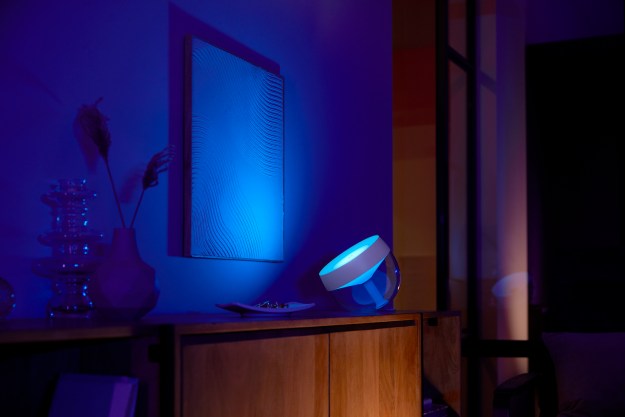Some enchanted evening, you might find yourself with an urge to set the mood outdoors. With Philips’ new Hue Go, you can change up any space’s vibes from romantic to Zen through your smartphone.
Hold the bowl-shaped mobile luminescent device in your lap or showcase it on the dining room table. Despite its shape, the Go doesn’t have to just rest on your table like a cereal bowl. You can tilt it up, too, depending on where you’d like to shed a little light. Like other products from the company’s line of programmable LED bulbs, Go can alternate among varied tones on the color spectrum, including traditional white, as well as various brightness levels.
A departure from the company’s other LEDs, Go isn’t tied to your wall socket. Each standalone unit reportedly remains charged for three hours at a time and is controlled by the Hue app (Android and iOS) and any of the 200-plus third-party apps available; you can have the Go light up when you get a notification, set it go off after an hour, or illuminate when you enter the house with its geofencing feature. You can also sync it with your music or use a third-party app to have the Go match what’s happening in certain video games.
If you’ve left your phone in another part of the house, you can still operate the wireless light source using its manual switch. When that blind date goes south, you can instantly lighten things up, changing from the Cozy Candle to Sunday Coffee pre-set, two of five “dynamic effects” built in to the system that cycle through different tones to match the ambience you’re trying to set.
Slated to arrive in stores by the end of May, Go is expected to retail for $100. For comparison, a three-pack of Philips Hue light bulbs, with an accompanying bridge to connect them to your Wi-Fi network, is $200.
Editors' Recommendations
- How to create spooky Halloween effects with smart home lighting and sound
- 8 things you didn’t know smart lights could do
- Govee unveils new outdoor lights in time for spooky season
- How smart lighting affects your health
- Twinkly’s new Dots LED string lights play nice with Razer Chroma


